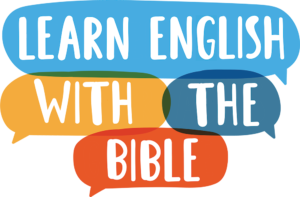Writing Great Sentences in English, Part 4
In the first post of this series, we learned about basic English sentence structure.
In the second post, we talked about the subject in an English sentence.
In the third post, we talked about the verb in an English sentence.
In this post, the last in our series, let’s learn more about the object in an English sentence.
A Quick Review of SVO Sentence Structure
Unless you are writing a song or poetry in English, you should use subject + verb + object (SVO) sentence structure. (Sometimes formal and academic writing breaks this rule, too.)
But don’t forget that the order of words in an English sentence is very important! The subject needs to come first, so we know who is doing the action. The verb comes second. The object of the sentence comes third. It tells us who or what is receiving the action of the verb.
Subject + Verb + Object (SVO)
What is an Object?
So what exactly is the object of a sentence? It is usually a noun or a pronoun. An object answers questions like “who,” “what,” “where,” or “when.” Without an object, your sentence would not have much detail, and would not be very interesting.
Three Kinds of Objects
There are three kinds of objects in an English sentence.
- direct object
- indirect object
- object of a prepositional phrase
Let’s talk about each one, with lots of examples.
1. Direct Objects
A direct object “directly” receives the action of the verb. It answers the question “who” or “what.” Here is an example from John 1:17:
…Jesus Christ brought
This sentence begins with a subject and a verb. But the sentence is not complete. The verb “bring” needs a direct object. The direct object will answer the question “what did Jesus Christ bring?” In a normal declarative sentence, the direct object goes after the verb.
…Jesus Christ brought…undeserved kindness and truth.
Here is another example, from Genesis 30:6:
…He...has given
The subject is “He” (God), and the verb is “has given.” The verb “give” is another verb that needs a direct object to answer the question, “What did God give?”
…He…has given…a son
We can add even more information to these sentences by using the second type of object, an “indirect object.”
2. Indirect Objects
If a sentence has a direct object, it might also have an “indirect object.” Indirect objects receive the action of the direct object. They can add information to your sentence by answering the questions “to what,” “for what,” “to whom,” or “for whom?” Let’s look at our sample sentences again.
…Jesus Christ brought us undeserved kindness and truth.
What did Jesus bring? Undeserved kindness and truth.
To whom did he bring it? To us. “Us” is the indirect object of this sentence. “Us” receives the direct object, the undeserved kindness and truth. Here’s our other example:
…He…has given me a son.
What did God give? A son. To whom did He give it? Who received the direct object, the son? “Me” (Rachel).
The indirect object goes after the verb and before the direct object.
…When we told him our dreams, he explained what each of them meant. (Genesis 41:2)
…”Let’s ask God what we should do.” (1 Samuel 18:5)
Now, let’s look at the last kind of object, the object of a prepositional phrase.
3. Object of a Prepositional Phrase
The “object of a prepositional phrase” is the noun or pronoun that is used with a preposition.
- after dinner
- to work
- on the table
- for me
After, to, on, and for are prepositions. Dinner, work, table, and me are their objects. Prepositions show location in place and time, so they answer the questions “where” or “when.”
…they arrested Peter and John and put them in jail for the night. (Acts 4:3)
Where did they put Peter and John? In jail.
When (for how much time) did they put Peter and John in jail? For the night.
Prepositional phrases answer different questions than direct and indirect objects answer.
Where Does a Prepositional Phrase Go in a Sentence?
Direct objects go after the verb. Indirect objects come between the verb and the direct object. However, prepositional phrases can appear anywhere in a sentence. Here are some examples:
- You sent messengers to John, and he told them the truth. (John 5:33)
This is a compound sentence, one sentence made of two independent clauses joined with a conjunction, “and.”
In the first independent clause:
subject – You
verb – sent
direct object – messengers
indirect object – to John (a prepositional phrase working as an indirect object)
In the second independent clause:
subject – he
verb – told
direct object – truth
indirect object – them
In the first independent clause, we also have a prepositional phrase – the preposition “to” and the object of the preposition, “John.” The prepositional phrase “to John” comes after the direct object and answers the question “where” – where the messengers were sent. This prepositional phrase is also acting as an indirect object, since it tells “to whom” the messengers were sent.
2. About eight days later Jesus took Peter, John, and James with him and went up on a mountain to pray. (Luke 9:28)
In this sentence, there are three prepositional phrases.
- “About eight days later” is at the beginning of the sentence, and answers the question “when.”
- “With him” is after the direct object and answers the question “where.”
- “On a mountain” appears after the second verb and also answers the question “where.”
Don't Be Confused by Phrasal Verbs with a Preposition
Did you notice that in our last sample we had a phrasal verb, “went up?” “Up” is a preposition, but in this sentence “up” is being used as part of a phrasal verb. You can know this because it is followed by another preposition, “on.” You will never have two prepositions in a row like that, so we know that the first one is part of the phrasal verb.
Don't Be Confused by Infinitive Verbs
In the last sample, Jesus and the disciples went up on the mountain to pray. In this sentence, “to” is not a preposition. It is part of the infinitive verb “to pray.” When the word “to” is followed by a verb, you can be sure it is an infinitive verb and not a preposition.
But the Pharisees and the experts in the Law of Moses refused to obey God… (Luke 7:30a)
The infinitive verb “to obey” is acting as a direct object in this sentence. It answers the question “what” – what they were refusing to do.
Does My Sentence Need an Object?
Many verbs need an object, but some verbs don’t. You will learn this with practice, reading and listening to English.
The boy brought.
This is a verb that needs an object.
The boy brought food.
The crowd ate.
This verb doesn’t need an object, but if we use one it gives us more information.
The crowd ate the bread and fish.
Lazarus died.
Sometimes a verb does not need an object.
Let's Review
This was a very quick overview of objects in an English sentence. Just remember, direct objects come after the verb. If your sentence has an indirect object, it comes between the verb and the direct object. In a question or a negative sentence, the word order might be slightly different, but that’s a topic for another post!
Has this post helped you? Be sure to leave a comment below! See you next time!



Thanks so much!
Hi Veronica! Thank you for catching that mistake – the example is from Genesis 30:6. I’m so glad you are enjoying the lessons and I hope they have helped you! Blessings, Sharon
Hi
I love excersincing my English with the Bible I just have a question, so far inthe second example that you use to explain the indirect object “He has given me a son” is it from Geness or from Ephesians?